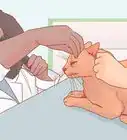This article was co-authored by wikiHow Staff. Our trained team of editors and researchers validate articles for accuracy and comprehensiveness. wikiHow's Content Management Team carefully monitors the work from our editorial staff to ensure that each article is backed by trusted research and meets our high quality standards.
There are 8 references cited in this article, which can be found at the bottom of the page.
This article has been viewed 79,283 times.
Learn more...
Aromatherapy involves the use of particular scents derived from plant sources to treat a wide range of conditions. If your cat is anxious because of an upset stomach or a long car ride, you might find aromatherapy very helpful. Scents like lavender, cardamom and spearmint can be used to treat your cat’s stress or anxiety. However, many essential oils are toxic and potentially fatal, so you will need to follow strict safety precautions.
Steps
Choosing an Essential Oil
-
1Use lavender to calm your cat. Lavender is well known for its calming and sedative effects in humans. You can also use this oil to induce calm and relaxation in your cat. If your cat gets anxious before or during travel, for instance, you could treat the anxiety with some lavender essential oil.[1]
- Geranium essential oil is a nice alternative to lavender for calming your cat during stressful events and situations, such as car rides.[2]
-
2Use cardamom to reduce nausea. If your cat is prone to nausea during long car rides, for instance, you could try cardamom. Cardamom is one of the few safe and effective essential oils for cats. Remember to reduce the concentration of cardamom essential oil by mixing it with a carrier oil, such as vegetable oil.[3]Advertisement
-
3Try spearmint for gastrointestinal issues. If your cat is anxious or experiencing stress because of stomach problems, you might try spearmint. Dilute the spearmint oil in a carrier oil, such as vegetable oil, and give your cat the opportunity to smell it.[4]
-
4Use frankincense essential oil. Frankincense oil has a calming and centering effect. It is one of the few essential oils that are definitely safe to use with cats, alongside cedarwood, geranium, helichrysum, lavender, cardamom and spearmint. Like any essential oil, it must be properly diluted prior to application. You can use it to calm your cat during long car rides or other stressful situations.[5]
-
5Find organic and unsprayed essential oils. Since any pesticides on the plant used for the oil will end up being highly concentrated in a non-organic essential oil, it makes sense to find organic or unsprayed essential oil products. Look at the label to see if there is any organic certification. If you are unsure, ask the retailer about the purity of the oil and whether it is organic.[6]
-
6Verify the quality of essential oils. Find a reputable dealer who knows the business and specializes in essential oils, since they are mostly likely to offer you good advice on the quality and purity of essential oil products. Unfortunately, there are no standards of quality or purity for essential oils. You need to do your research on the brand and find a reputable dealer.[7]
- The terms ‘therapeutic’ or ‘clinical grade’ are unregulated in the essential oil business. You should be skeptical of marketing that contains these kinds of terms.
-
7Avoid any essential oils with polyphenolic compounds. Since your cat’s liver is unable to handle polyphenolic compounds or ‘phenols’, you should avoid essential oils with this substance. For instance, you should avoid giving your cat cinnamon, oregano, clove, wintergreen, thyme, savory and birch oils, which contain this substance and are nicknamed ‘hot’ oils.[8]
- If you do not know whether an essential oil contains phenols, you could ask an aromatherapist or consult with your veterinarian.
-
8Don’t let your cat access tea tree or melaleuca oil. Although tea tree oil is safe to use on humans when applied topically and is often used in cleaning products, it is very dangerous for your cat. In fact, tea tree oil contains terpenes, a substance that is toxic to both humans and pets when ingested orally.[9] Whereas humans can use tea tree oil topically, cats are very sensitive to the topical application of tea tree oil. You should avoid applying it topically to your cat’s skin or fur. If you use tea tree oil for health or cleaning, you should make sure it is inaccessible to your cat.[10]
- In some cases, topical application of tea tree oil has resulted in cat fatalities.[11]
- If your cat accidentally ingests tea tree oil, you should take them to the veterinarian. It may take up to 72 hours to treat poisoning from tea tree oil.
- Symptoms of ingesting tea tree oil in toxic amounts may include vomiting, seizures and muscle tremors.
-
9Avoid peppermint and lemon oils. Citrus-based oils should be avoided, since cats are often allergic or sensitive to these oils. You should neither apply citrus based oils directly to your cat’s body nor diffuse them in a room that is accessible to your cat. For instance, you should not leave a cat in a locked room with citrus based oils diffused in the air. Avoid the following essential oils, which are toxic for your cat:[12]
- Lemon
- Orange
- Tangerine
- Mandarin
- Grapefruit
- Lime
- Bergamot
- Pine
- Spruce
- Fir
Determining Your Cat’s Interest
-
1Don’t force your cat to smell, taste or otherwise consume essential oils. Since cats are very sensitive to essential oils, it is best to give them the choice of whether to interact with them. Give your cat the opportunity to experience an essential oil but do not force it on them. You want to give them plenty of autonomy, such as opportunities to smell the oil or walk away if they are uninterested.
-
2Get your cat comfortable with the essential oil. Apply the essential oil to your body and let your cat get used to the smell. For instance, if you want to use lavender to calm your cat, you could start using a lavender-based soap. You could also apply two drops to your neck or arm and let your cat smell you for a few days prior to administering it.[13]
-
3Hold the essential oil dilution six inches from their nose. Using a spray bottle or a small bottle of essential oil diffused in vegetable oil or another carrier oil, hold the essential oil mixture six inches from your cat’s nose. Wait and observe their behavior. If they show signs of interest in the oil, you should go ahead and begin administering the essential oil. Signs of interest include:
- Your cat licks their lips
- Sniffing the spray bottle
- Sniffing and then returning to the bottle
-
4Consider hydrosols instead of essential oils. If your cat does not respond well to essential oils, you might consider hydrosols which are very similar to essential oils but far less concentrated. Although little research has been done on the topic, hydrosols may be preferable for use with cats because they are more gentle and diluted.
- Hydrosols are collected from the steam that is released during the production of essential oils.
Administering the Essential Oil
-
1Dilute the essential oils. Start by diluting the essential oil in a carrier oil. Given the strength of essential oils and your cat’s sensitivity to them, you will want to dilute the essential oil by 80-90% In a clean glass jar, pour 25 milliliters (0.85 fl oz) of carrier oil. Then, add one drop of essential oil. Mix the oils together. Finally, add a few drops of the mixture to the water in your essential oil diffuser.[14]
- For the carrier oil, use a cold pressed vegetable oil.[15]
- You could use three drops of essential oil and 75 ml of carrier oil.
-
2Leave out a dish of diffused essential oil. In a small water bowl or diffuser, you could leave out some diffused essential oil, such as lavender. Make sure you diffuse it by 80-90% in vegetable oil. Then, put one or two drops of the diffused oil mixture into the container. If your cat feels like it, they can smell the container of essential oil and experience its calming effects.
- You can find essential oil diffusers for under $40. Consider the size of the diffuser and try to find one that will not fall over easily, since your cat could knock it over.[16]
- Remember to make sure your cat has access to fresh water.
-
3Apply essential oil to their body. Using diffused essential oil, apply a few drops to their paws or to their fur. Since they will be stuck with the smell, you should make sure they actually like the smell of the essential oil.[17]
- If you are sure they like the smell of the essential oil, you could put a few drops of the diffused oil on your hands and then pet your cat. Give them a relaxing massage with the oil and hopefully they will calm down.[18]
-
4Offer an escape route. Never give your cat the feeling of being stuck with a certain oil or smell. If you are leaving the house, do not leave your cat in a closed room with an essential oil diffuser. They need the autonomy to be able to walk away from the source of the smell, in case it has adverse effects on them.[19]
-
5Be careful not to get any oil in your cat’s eyes or ears. If you are petting your cat with some essential oil, be careful not to let any fall into their eyes or ears. If you get oil in your cat’s eyes or ears, they may get an infection.[20]
- If essential oil gets in their eyes, you should take them to the veterinarian.
-
6Use an essential oil for two weeks at a time. Essential oils are a short term solution that is useful for calming your cat once in a while, but should not be relied upon exclusively or for a very long time. If your cat has been very stressed out, you can use them for two weeks. If you want to use them for a longer period, you should consult with your veterinarian.[21]
Community Q&A
-
QuestionIs diffused eucalyptus oil harmful to my cat?
 Community AnswerYes, all eucalyptus products are toxic to cats. They cannot handle eucalyptol (a compound inside the oil) and it poisons them - try to keep your cat(s) as far away from eucalyptus as possible.
Community AnswerYes, all eucalyptus products are toxic to cats. They cannot handle eucalyptol (a compound inside the oil) and it poisons them - try to keep your cat(s) as far away from eucalyptus as possible.
References
- ↑ http://www.huffingtonpost.com/richard-palmquist-dvm/pet-aromatherapy_b_877199.html
- ↑ http://www.experience-essential-oils.com/essential-oils-for-cats.html
- ↑ http://www.onegreenplanet.org/animalsandnature/natural-stress-remedies-for-dogs-and-cats/
- ↑ http://www.huffingtonpost.com/richard-palmquist-dvm/pet-aromatherapy_b_877199.html
- ↑ http://www.experience-essential-oils.com/essential-oils-for-cats.html
- ↑ http://www.huffingtonpost.com/richard-palmquist-dvm/pet-aromatherapy_b_877199.html
- ↑ http://www.huffingtonpost.com/richard-palmquist-dvm/pet-aromatherapy_b_877199.html
- ↑ http://www.huffingtonpost.com/richard-palmquist-dvm/pet-aromatherapy_b_877199.html
- ↑ http://www.petmd.com/blogs/thedailyvet/ken-tudor/2014/january/tea-tree-oil-safe-pets-31282#
- ↑ http://www.huffingtonpost.com/richard-palmquist-dvm/pet-aromatherapy_b_877199.html
- ↑ http://roberttisserand.com/2011/06/cats-essential-oil-safety/
- ↑ https://vetmed.tamu.edu/news/pet-talk/a-scent-sitive-subject-essential-oil-diffusers-and-your-cat/
- ↑ https://www.youngliving.com/blog/essential-oils-for-pets-a-quick-how-to/
- ↑ https://www.youngliving.com/blog/essential-oils-for-pets-a-quick-how-to/
- ↑ http://www.huffingtonpost.com/richard-palmquist-dvm/pet-aromatherapy_b_877199.html
- ↑ https://www.yourbestdigs.com/reviews/best-essential-oil-diffuser/
- ↑ https://www.youngliving.com/blog/essential-oils-for-pets-a-quick-how-to/
- ↑ https://www.youngliving.com/blog/essential-oils-for-pets-a-quick-how-to/
- ↑ http://www.huffingtonpost.com/richard-palmquist-dvm/pet-aromatherapy_b_877199.html
- ↑ https://www.youngliving.com/blog/essential-oils-for-pets-a-quick-how-to/
- ↑ http://www.huffingtonpost.com/richard-palmquist-dvm/pet-aromatherapy_b_877199.html
About This Article
Although many essential oils are dangerous for cats, there are some that are safe if you’d like to calm your cat with aromatherapy. For instance, scents like lavender, geranium, or frankincense all have a soothing effect and are safe around cats. You could also use cardamom or spearmint if the cat is showing signs of nausea or gastrointestinal discomfort. If you have any questions about whether an oil is safe, consult your veterinarian. Keep reading to learn how to administer the oil to your cat!
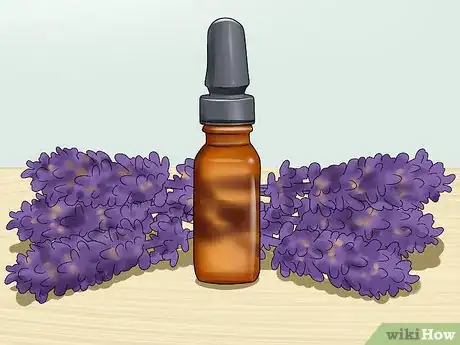

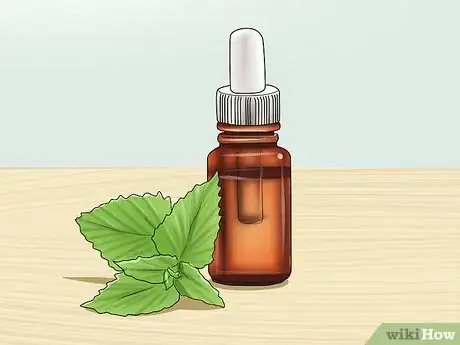
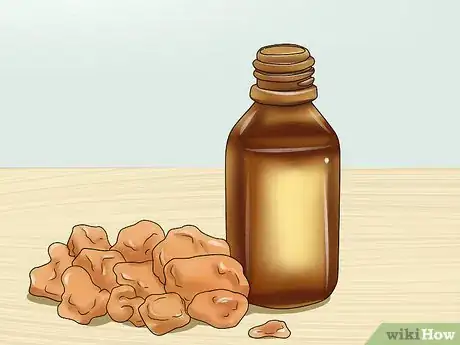



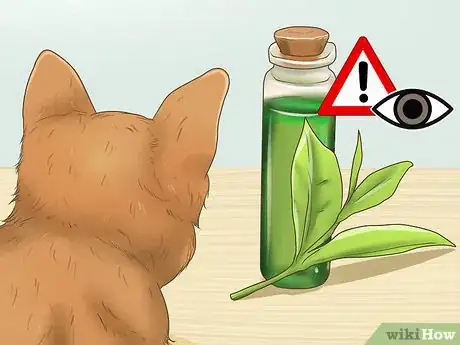

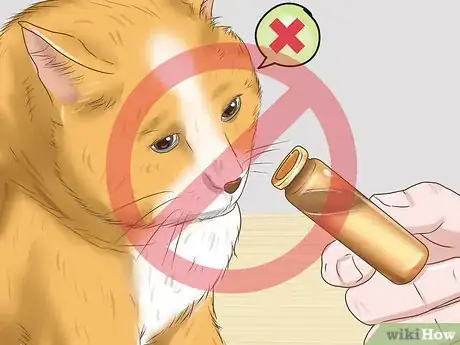
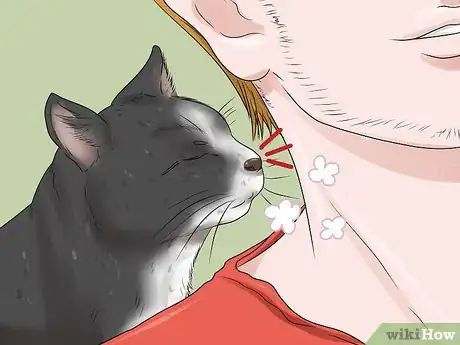
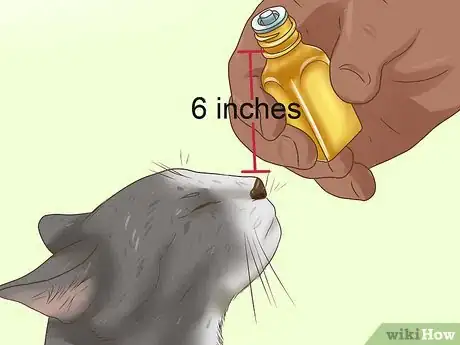


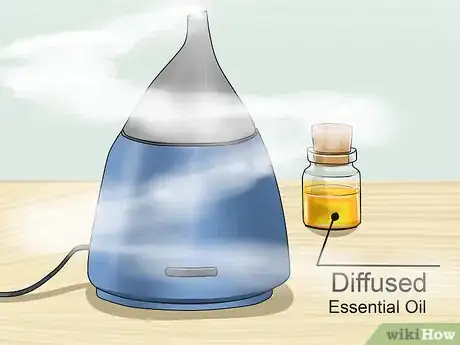
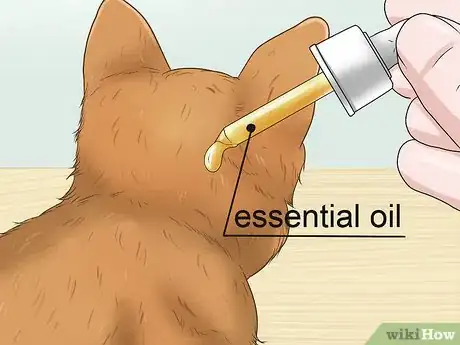







-Step-19.webp)














